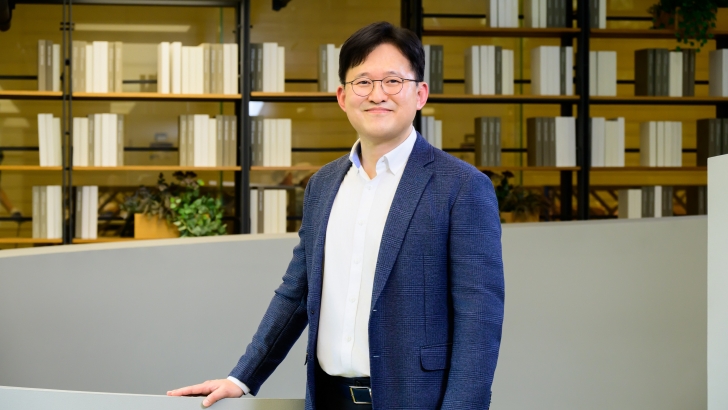Part two of the interview series covers Samsung’s expanding influence in global 6G standardization efforts, with a focus on establishing consensus in the communications industry
Samsung Newsroom interviews Dr. Younsun Kim, Master at Samsung Electronics’ Technology Standards Research Team and Chair of 3GPP RAN
Discussions on 6G standardization are now in full swing. With the goal of achieving commercialization by 2030, major international standardization bodies, including the 3rd Generation Partnership Project (3GPP), have started addressing 6G-related technology agendas this year and have begun formal work on technical standardization.
In this context, Dr. Younsun Kim, Master at Samsung Electronics’ Technology Standards Research Team, was elected Chair of the 3GPP Technical Specification Group Radio Access Network (TSG RAN) in March, marking the first time a Korean has taken on the role. As Chair, Dr. Kim is expected to play a pivotal role in shaping next-generation communications standards in this early and formative phase.
Following part one of this interview series, Samsung Newsroom sat down with Dr. Kim for part two to explore the strategic challenges and opportunities he faces in his leadership roles at 3GPP and Samsung Research, as well as his vision for the future of 6G standardization.
▲ Dr. Younsun Kim, Master at Samsung Electronics’ Technology Standards Research Team
Full-Scale Launch of 6G Technical Standardization Efforts in 2025
In 2023, the International Telecommunication Union Radiocommunication Sector (ITU-R) released the 6G Framework, outlining the overarching direction for future communications technologies. By 2026, the organization aims to finalize both the technical requirements and evaluation methods for candidate technologies.
In line with this timeline, 3GPP held a 6G workshop in Korea this past March, officially marking the start of formal standardization efforts. TSG RAN — currently chaired by Dr. Kim — plays a central role in this process, accounting for a major portion of patents associated with global communication standards.
“During the June meeting — the first meeting I chaired since taking on the role — we approved the 6G Study Item,1 the official starting point of 6G technology research,” said Dr. Kim. “We’ve now entered the phase of closely evaluating the performance enhancement potentials of candidate technologies. Based on these findings, the roadmap and timeline for 6G specifications are expected to be finalized by June of next year.”
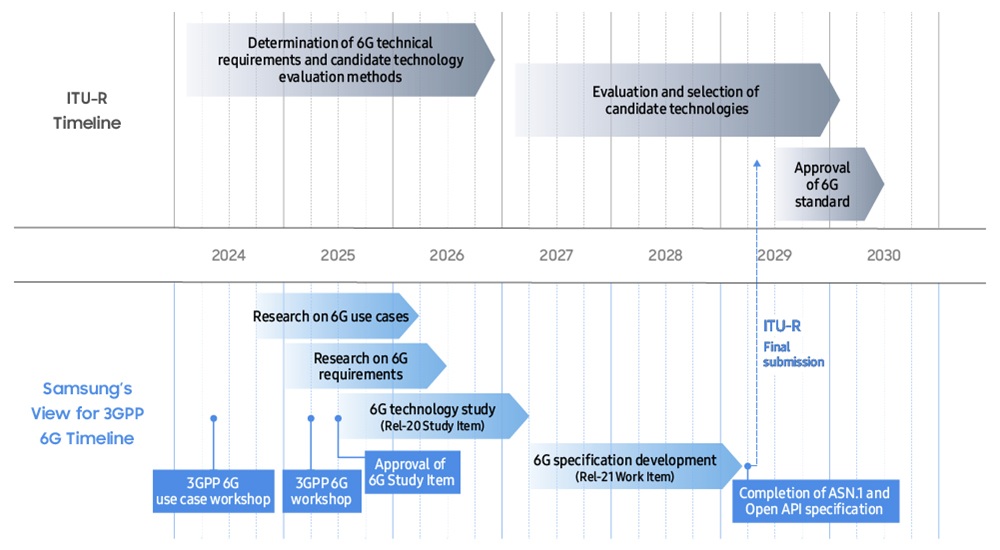
▲ 6G standardization roadmap
6G development is currently in the stage of establishing use cases and technical requirements, which lays the groundwork for detailed research on candidate technologies. This research is expected to continue for approximately two years, through mid-2027. After that, the process will formally transition to the standard specification development phase, known as the Work Item,2 with the first set of official 6G specifications projected to be completed by mid-2029.
Consensus-Building: The Core of Standardization Leadership
Dr. Kim is an industry veteran who began his work on mobile-communication physical-layer standardization in 1999. Over the past 26 years, he has been involved in standardization activities across multiple generations from 3G to 6G. In 2017, he was appointed Vice Chair of RAN1, one of the working groups within 3GPP TSG RAN, and became Chair of RAN1 in 2021, where he led the development of the initial 5G standards and subsequent discussions to further advance 5G standardization. Since being elected Chair of the 3GPP TSG RAN in March, he now oversees all RAN-related standardization discussions.
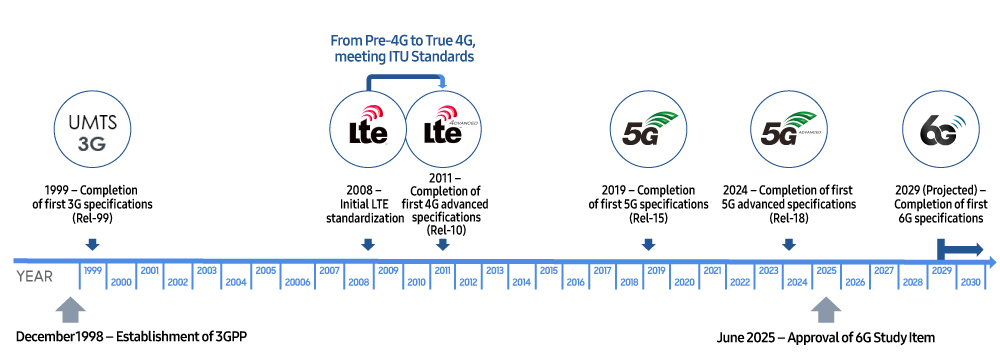
▲ The journey from 3G to 6G standardization
“As RAN1 Chair, I mainly approached the decision making process from a technical perspective. Even when discussions were intense, decisions could ultimately be made based on technical merit or evidence,” said Dr. Kim. “But now, overseeing the entire scope of RAN standardization, I find that many issues can no longer be resolved just based on technical aspects alone.”
3GPP is a global partnership project comprising more than 800 member organizations from 43 countries. With such a wide range of stakeholders — each bringing their own needs, strategies, and technical proposals — the Chair plays a crucial role in shaping the technical agenda, mediating conflicting viewpoints, and guiding the overall direction of discussions.
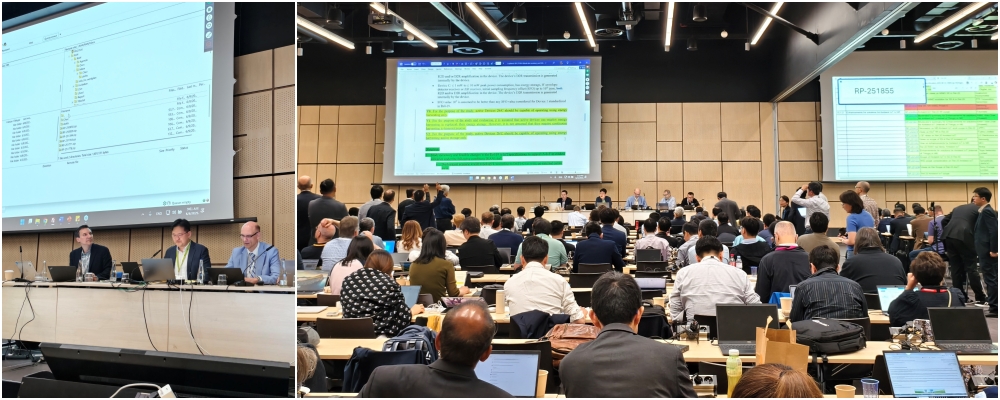
▲ (Left) Dr. Younsun Kim presides over a 3GPP TSG RAN meeting; (Right) Attendees engage in the meeting proceedings.
“One of the Chair’s key responsibilities is to lead discussions on future work scope of RAN working groups and coordinate development timelines. The role also involves setting technical priorities and steering dialogue in the right direction,” Dr. Kim explained. “That said, since 3GPP operates based on consensus, decisions are made only when a shared understanding is reached among participating companies.”
The Need for Balance That Goes Beyond Corporate and National Interests
Building consensus is no easy task. As the focal point of standardization discussions, the Chair must act as both a trusted architect and an impartial mediator, capable of reconciling a wide range of interests. The role demands a global perspective and strong sense of balance that transcend corporate or national affiliations.
“The foremost duty of the Chair is to build a structure that partners can trust and rally behind,” said Dr. Kim. “Driving consensus requires the ability to understand differing regional and business perspectives — and to craft workable compromises. Over the next four years, I’ll focus on deepening engagement with member companies and gaining a fuller understanding of their views.”
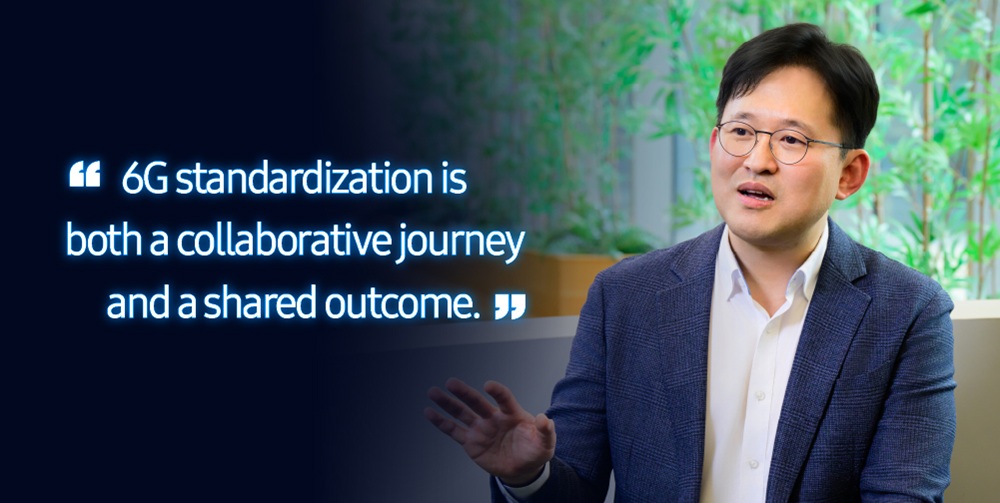
As the first Korean to chair the 3GPP TSG RAN, Dr. Kim is a true trailblazer. His leadership not only marks a personal milestone but also reflects Samsung Electronics’ growing influence across the global standardization landscape. Backed by the company’s technological expertise, Dr. Kim is helping carry forward Samsung’s legacy of innovation on the world stage as the industry turns its focus to how the 6G standard will take shape in the years ahead.
In part three of this series, Samsung Newsroom will explore AI-RAN, a next-generation communications technology poised to reshape the industry, and highlight Samsung’s research initiatives aimed at establishing it as a global standard.
1 A preliminary research phase focused on evaluating the technical feasibility and performance of candidate 6G technologies before formal specification begins.
2 A formal development phase in which technologies identified during the Study Item are further refined, specified and incorporated into official standard specifications.
